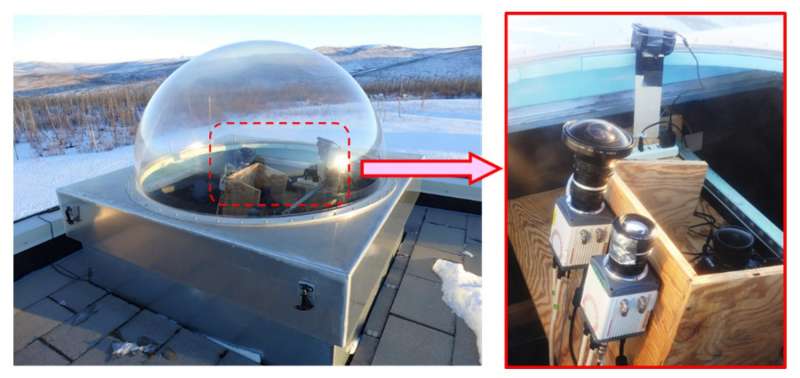Successful filming of fastest aurora flickering

Auroras are typically described as slowly shimmering curtains of light illuminating the sky. However, when an explosive aurora known as a breakup occurs, it sometimes leads to a flickering phenomenon. When an aurora flickers, its brightness and motion in some areas change rapidly. This flickering typically oscillates at a .1 second period, which is equivalent to the ion cyclotron frequency of oxygen ions.
Dr. Yoko Fukuda at The University of Tokyo, Dr. Ryuho Kataoka of the National Institute of Polar Research, and other collaborators conducted a three-year continuous high-speed imaging observation at Poker Flat Research Range, Alaska, U.S., and identified the physics behind the flickering. They also discovered faster flickering at speeds of 1/60 to 1/50 and 1/80 of a second.
On March 19, 2016, the researchers observed an aurora with brightness that ranked within the top five of all observations since 2014, and was filmed with a 1/160-second shutter speed camera. Detailed analysis of the footage showed a high-speed flickering aurora vibrating with a 1/80 second period taking place during the brightest moment of the breakup.
"High-speed flickering at 1/80 seconds could not be explained by oxygen ions alone. Lighter ions, such as those from hydrogen, are thought to be contributing to the flickering," explains Dr. Fukuda. "The fact that this high-speed flickering was observed at the same time as flickering with a typical 1/10 second period may mean that the flickering aurora was caused by electromagnetic ion cyclotron waves, which are affected by both oxygen and hydrogen ions."
At altitudes of several thousand kilometers, plasma waves are excited by accelerating electrons and ions. These electrons are what eventually generate auroras. It is assumed that a complex exchange of energy, in which plasma waves are affected by electrons and ions and vice versa, takes place here.
"Astronomical objects with magnetic fields are found throughout the cosmos, with Earth being one of them. On such objects, we observe excitation of plasma waves by accelerating particles, and the interactions between plasma waves and particles, are occurring all over the place," concludes Dr. Kataoka. "However, Earth is the only place we can observe these phenomena in detail. Understanding the behavior of plasma in outer space, and the interactions between plasma waves and particles is a fundamental question in geophysics. We will continue to investigate them in the future."
More information: Yoko Fukuda et al, First evidence of patchy flickering aurora modulated by multi-ion electromagnetic ion cyclotron waves, Geophysical Research Letters (2017). DOI: 10.1002/2017GL072956
Journal information: Geophysical Research Letters
Provided by Research Organization of Information and Systems




















